Honey Ants – An Ant Species That Looks Like a Bee but Isn’t, Thought to Carry Honey but Actually Doesn’t.
Strange Ants with Grape-Sized Abdomen
Life cleverly arranges situations that “seem one way but actually aren’t”, adding a fresh twist to our daily existence.
Among these is the honey ant, resembling honeybees yet not being bees, thought to carry honey but actually… it’s not honey.

The strange honey ant with its round, plump abdomen.
Most honey ant species are found in arid, desert, or semi-arid regions in Australia, the United States, Mexico, and the African continent, where foraging for food can be challenging. Therefore, honey production and storage are seen as adaptations for survival in these harsh environments.
Reportedly, this species was first discovered in Australia in 1881 by American naturalist Henry Christopher McCook. Gradually, they proliferated and migrated to various other regions.
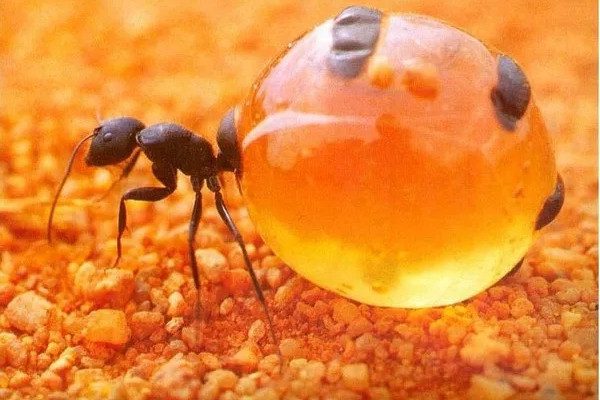
The shape of their abdomen is the most fascinating feature of these ants. Their abdomens swell, round, and appear to be filled with glistening golden droplets of liquid.
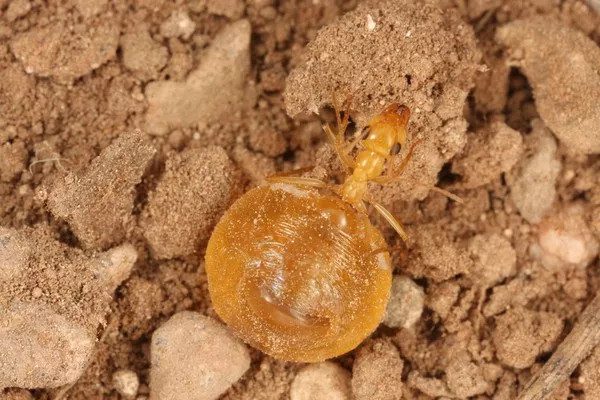
Like their relatives in the ant world, honey ants also organize their society in hierarchies, each level with specific responsibilities.
The highest position in the colony naturally belongs to the queen ant, responsible for reproduction. However, it is essential to know that not every individual in a honey ant colony is… a honey ant. Within a colony, some are male ants tasked with mating with the queen to produce new generations.
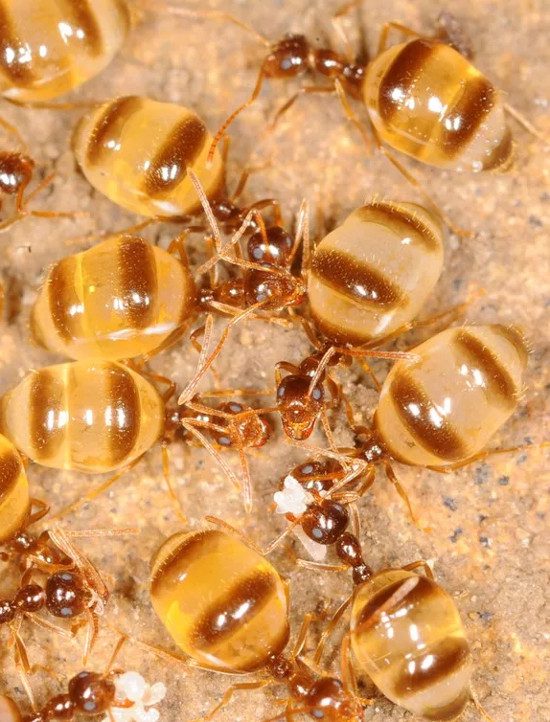
Honey ants make up only a small fraction of the entire ant colony.
The remaining members are worker ants and a small number of “genuine” honey ants.
So what is the role of these honey ants?
The simple task of honey ants is to diligently… get fat. Indeed, the larger they are, the better. In fact, honey ants rarely move; they hang quietly on the roof of their nest and only move when absolutely necessary.

Honey ants are very lazy movers, just hanging on the top of the nest and… enjoying.
Their “beer belly” actually contains a lot of liquid nutrients. They serve as food storage for the entire colony.
Instead of storing food in a special chamber like other ant species, worker honey ants bring food back and… “nourish” their peers. In this way, the honey ant’s belly can reach the size of a large grape.
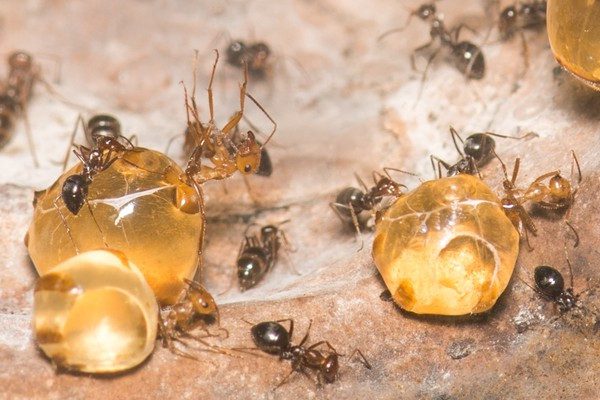
During food shortages, honey ants provide nutrients to other members of the colony.
At that time, worker ants simply need to tug on the honey ant’s antennae, and they will be rewarded with… the nutritional regurgitate produced by the honey ant.
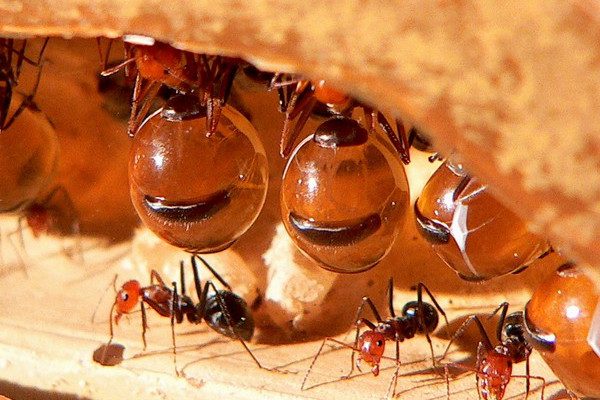
However, some subspecies of honey ants in Australia exhibit the behavior of… “beautifying” this movable food storage. In other words, honey ants may be torn apart and eaten by their own kind.
Afterward, they will… “spit” part of the meal back to “nourish” their plump-bellied friends.

An interesting fact is that many other ant species mistakenly believe that honey ant nests contain honey and attack to loot them.

People can catch a honey ant and chew it immediately. While many may find this act frightening, the abundant nutrients in their bellies make honey ants a “delicacy”. In many parts of the world, honey ants have become a highly sought-after delicacy.
In the 1990 documentary Trials Of Life, director David Attenborough was even filmed placing a honey ant in his mouth and actually tasting it.
According to research by scientists, although at first glance honey ant liquid and honey may look very similar, honey ant liquid is less viscous than honey. It is sweet but not as sweet as the honey we are accustomed to, and honey ant liquid also has a sour taste not found in honey.
Check out the indigenous Australians catching honey ants in the video below.
- Discovering Strange Ant Species Around the World
- Colonial Ants Change Behavior After Victory
- Mysteries of the Aggressive Argentine Ant
- Meteorite That Extinct Dinosaurs Created a 1.5 km High Wave, 30,000 Times Stronger Than the Strongest Tsunami in History
- Shocking “Monster” Revived After Being Eaten, Casually Mates and Gives Birth
- Strange Creature Easily Escapes Shark Jaws, Where Lies the Secret?


















































